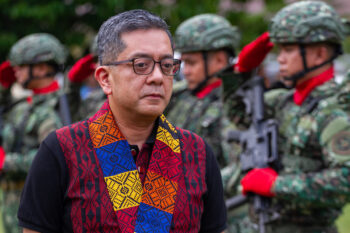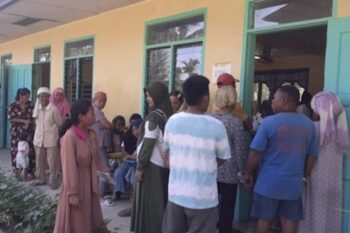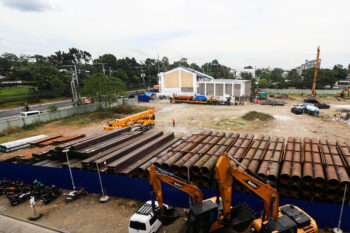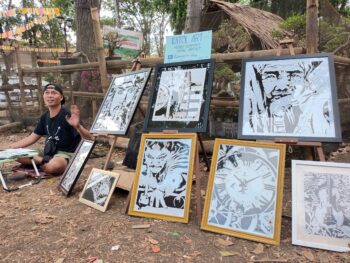MINDAVIEWS
ANGAY-ANGAY LANG: Reflections on the Bangsamoro Right to Self-Determination
1st of 6 parts
By Rudy Buhay Rodil
[My paper written in typewriter when I was a participant at the Eleventh Annual Seminar Session on Mindanao and Sulu Cultures, Dr. Peter Gowing Memorial Research Center, Marawi City April 15 to May 10, 1985; delivered at the First Assembly of Ranao Development Forum, 18-19 May 1985, Marawi City. Slightly revised.]
ILIGAN CITY (MindaNews / 21 Oct) – The subject of Bangsamoro right to self-determination is a relatively new one in his part of the country. It came to prominence only with the emergence of the Moro National Liberation Front which bannered the concept of Bangsamoro. Because the MNLF claimed the entirety of Mindanao, Sulu and Palawan as the Bangsamoro’s ancestral domain, a lot of questions were asked especially among the Christian population on the implications of this move but without clearcut answers.
Self-determination took on a more definite shape with the Tripoli agreement of December 23, 1976, signed between the representatives of the MNLF and the Philippine government.
But even then social scientists had great difficulty trying to define autonomy. More questions surfaced. The provisions of the Tripoli agreement helped little to clarify these. The rest is now history.
The Philippine government under President Ferdinand Marcos had unilaterally maneuvered the autonomous regions, Regions 9 and 12, into existence; the MNLF had objected to this procedure and reverted to its original demand of separation of the Bangsamoro people and territory from the Philippine republic; even the more moderate Moro groups continue to demand for the full implementation of the Tripoli agreement. The issue of the Bangsamoro right to self-determination is far from resolved.
This paper is at best an exploratory, a preliminary attempt to figure out the direction of the Bangsamoro struggle for self-determination. Since the MNLF has so far led to the struggle (even at present it seems to have been severely weakened by pressures both from within and from without) and is very much in the thick of the fight, and it seems to be the only group that has struck to the issue of secession, we are therefore constrained to focus our discussion on this particular group. We shall proceed on the basis of the following outline:
- I. Theory and forms of self-determination
- II. The Moro people’s fight for self-determination: Historical perspective
- III. The MNLF response: their view of the present Moro situation
- IV. Basic problems faced by the MNLF
A. Poverty in Moroland
C. Pressures of tradition; the pagan ang Islamic past
D. Relations with the other Lumad and Christian populations
D. The need for a model: Islamic state or Revolutionary line
Theory and Forms of Self-Determination
The Charter of the United Nations has provided in Chapter I, Article 2 that in order for nations to develop friendly relations, relationship must be based “on respect for the principle of equal rights and self-determination of peoples”. And in Chapter IX, Section A, the same principle is cited as necessary for “the creation of conditions of stability and well-being” themselves indispensable “for peaceful and friendly relations among nations.” (Muhammad Aziz Shukri, The Concept of Self-Determination in the United Nations, Syria: Aljadidah Press, 1965, p. 45)
The above points were decided upon at the San Francisco Conference in 1945. It is to be noted, said Shukri, that since its inception in the 18th century, the principle of self-determination has been associated with various concepts: “With democracy in the French Revolution, with nationality in the XIX century in Europe, and most recently with independence in Africa”. (Ibid., 60) It was not until the General Assembly of 1950 that the United Nations “recognized the right of peoples and nations to self-determination as a fundamental human right” (Ibid., 248) while the expression of self-determination appeared nowhere in the Universal Declaration of Human Rights, Article 21 of the document, however, unequivocally stated that “the will of the people shall be the basis of the authority of the government; this will be expressed in periodic and genuine elections which shall be by universal and equal suffrage and shall be held by secret vote or by equivalent free voting procedures”. (Ibid., 251)
The question of form, however, has remained largely undefined. But from a quick review of internal arrangements in various countries in the world today, we can identify several concrete expressions of self-determination of peoples. The more common seems to be the autonomous type of arrangement whereby distinct cultural groups, more popularly referred to as minority nationalities are integrated collectively rather than individually into a state entity, and, are governed through the so-called autonomous regions. Another form though less common is the federal system whereby the central state is partitioned into member states, federated as co-equal entities, and so called the federal system. The extreme form is when a portion of a state secedes into an independent entity. This is what the MNLF is seeking.
One thing all these forms of self-determination have in common is the recognition of the principle of the “consent of the governed”. And the Philippine government under President Marcos, by signing the Tripoli agreement and by consenting to the creation of the autonomous region has actually recognized the legitimacy of the struggle of the Moro people for self-determination. The controversy over whether or not the President has fulfilled the terms of the agreement is beside the point.
[Si Prof. Rudy Buhay Rodil ay aktibong historyan ng Mindanao, tagapasulong ng kalinaw (Bisaya sa kapayapaan). Kilala siyang espesyalista sa paghusay ng mga gusot sa Mindanao-Sulu. Naging Komisyoner noon ng Regional Consultative Commision sa siyang nagbuo ng draft organic law ng Autonomous Region in Muslim Mindanao noong 1988. Dalawang beses siyang naging miyembro ng GRP Peace Negotiating Panel. 1993-1996, pakikipag-usap sa Moro National Liberation (MNLF), at noong 2004-2008 sa pakikipag-negosasyon sa Moro Islamic Liberation Front (MILF). Naging visiting propesor sa Hiroshima University, Oktubre-Disyembre 2011. Nagretiro noong Oktubre 2007.]







